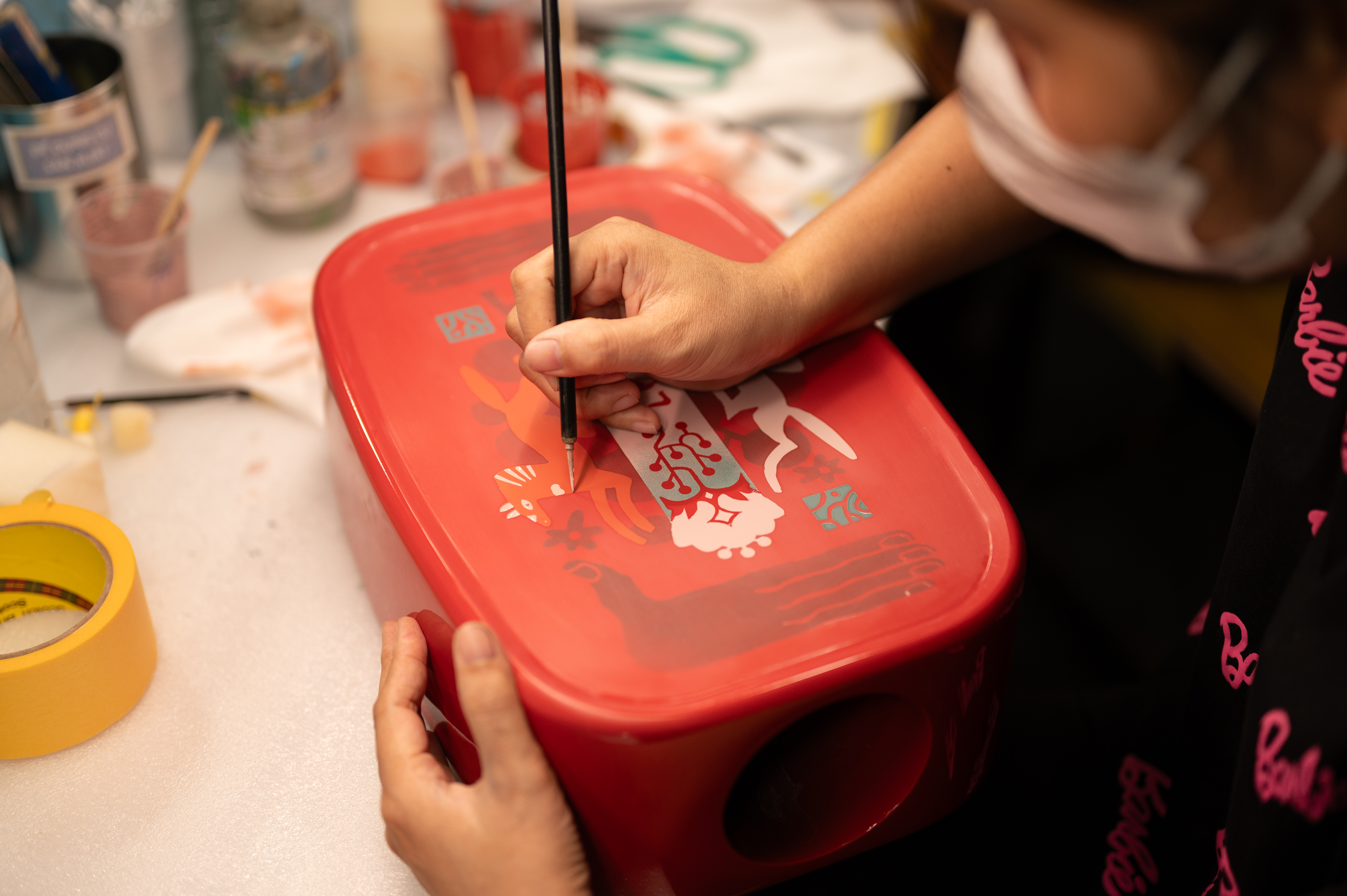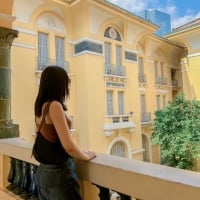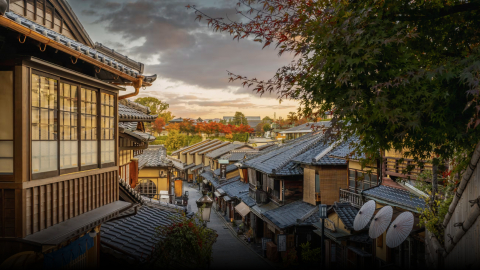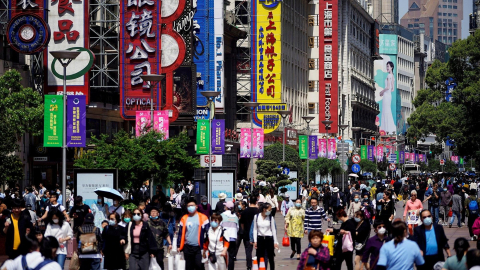The prosperity of lacquer is associated with lacquer paintings and the names of many "big names" of Vietnamese fine arts such as Nguyen Gia Tri, Pham Hau, Hoang Tich Chu... The generation of painters from the prestigious Indochina Fine Arts School helped Vietnamese lacquer develop and create a "prosperous" period in the 30s and 40s of the 20th century.
After many hardships in regaining its former glory, Vietnamese lacquer has now become a name that receives special attention, partly because of the media explosion after the "hammering" at famous auction houses around the world. But most of the attention comes from the story behind the traditional art form considered the "typical representative" of Vietnamese fine arts, a form that is both inspiring and very sophisticated.

The type is inspirational but also very sophisticated.
Nowadays, lacquer is not only limited to the space of fine arts, but also enters daily life with more diverse applications, to help the art form that was once considered to be associated with the royal court, the "gold-plated lacquer" of the past become closer. Inheriting the quintessence of traditional craftsmanship, the high-end lacquer brand Hanoia creates modern lacquer products such as vases, tea boxes, trays, Tet jam boxes and many other unique creations.
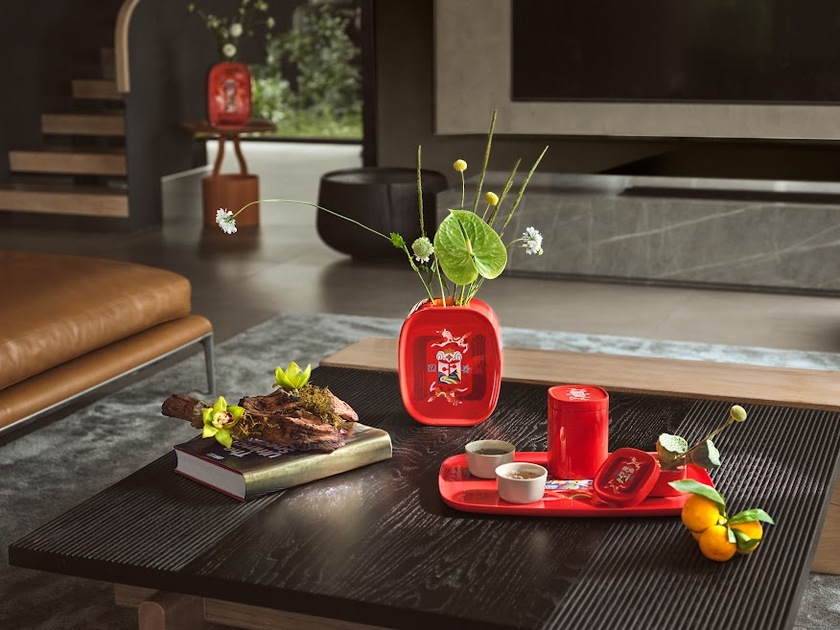
Inheriting the quintessence of traditional craftsmanship, the high-end lacquerware brand Hanoia creates modern lacquerware products such as vases, tea boxes, trays, Tet jam boxes and many other unique creations.
To talk about the complexity of lacquer, we must understand the typical stages to create the product. Simply put, through philosophy, lacquer includes two main stages, which are coating layers of paint and grinding repeatedly to achieve the desired color or color durability and effect. Specifically, a Hanoia lacquer product must go through dozens of different stages, from shaping the product (the materials used are wood, MDF or synthetic fibers, etc.), cutting, wrapping fabric, lining, water-grinding, coloring, color grinding, light grinding, glazing, polishing, etc. Along with that, depending on the design and wishes of the developer, other decorative techniques can be applied to create aesthetics and enhance the value of the product.
Over the years of development, Hanoia has a diverse collection of colors and a series of unique lacquer secrets such as eggshell inlay, mother-of-pearl inlay, silver leaf, gold leaf, engraving, and hand-painting. Mr. Ty, the master craftsman of Hanoia lacquer workshop, is the one who understands each technique best. He shared: "There are new colors that we have to research, mix and experiment for months to find the exact language we want." Thanks to him, Hanoia can completely turn unique design ideas into reality.
Elaboration, careful calculation, patience and passion for lacquer art are the prerequisites for artists and artisans to coordinate smoothly to create finished lacquer products for users.

Elaboration, careful calculation, patience and passion for lacquer art are the prerequisites for artists and artisans to coordinate smoothly to create finished lacquer products for users.
“Intricacy, meticulousness, careful calculation, patience and passion for lacquer are the prerequisites for artists and artisans to coordinate smoothly together to create finished lacquer products for users.”
The difference between ordinary lacquer and high-end lacquer lies in the elaborateness and meticulousness in the production process. The more layers of lacquer, the more durable and beautiful the product, and therefore the higher the value. In addition, what determines the value and high-end of the product is the technique used, in which the effects of silver leaf, gold leaf and hand painting are considered the most advanced techniques.

Realistically and vividly reproduce original paintings drawn on paper or in digital environment
When it comes to hand-painting on lacquer, this technique requires the artist to double his calculations to be able to realistically and vividly reproduce the original paintings drawn on paper or in a digital environment. The most skilled and experienced artists often share that the biggest challenge of hand-painting lies in the smooth surface of lacquer. This characteristic makes the paint more difficult to "absorb". Especially when dealing with light and dark tones; if on paper, the artist can adjust by diluting the color, or adjusting the pen pressure to create the desired light and dark tones...
As for lacquer, during the painting process, the artist needs to be creative and transformative to recreate those shades through different colors and techniques. With paintings with many details and using many colors, the artist needs to calculate the order of the color blocks, which areas to paint first, which areas to paint later... to proceed with color blocking - the stage where the artist sticks decals around the details and strokes.
After finishing painting an area and waiting for the paint to dry, the artist unblocks the paint and moves on to other areas. The process of blocking - painting - waiting for it to dry is repeated many times until the entire cross-section of the painting is completed. It is this meticulousness and meticulousness that leads to the need for a whole month to complete a lacquer and hand-painted product.
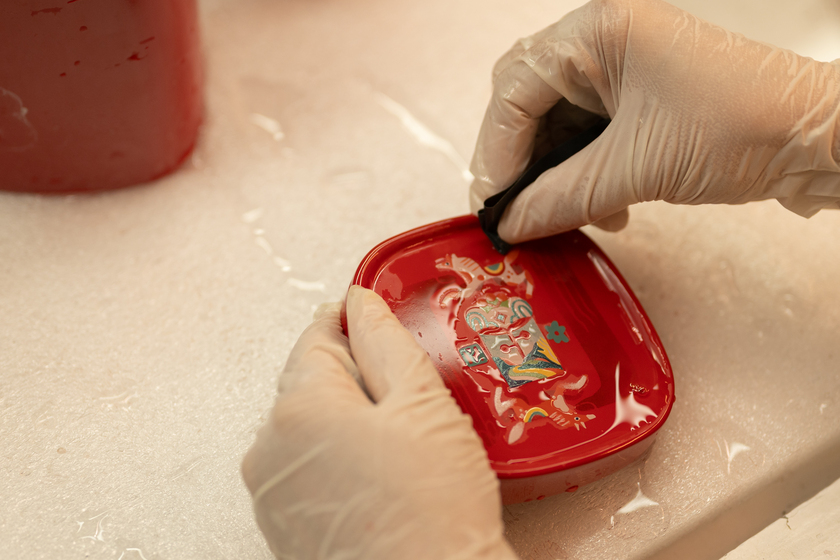
The sophistication and meticulousness lead to the fact that it takes months to complete a lacquer and hand-painted product.
That is why the saying that lacquer is fickle is not wrong. And for that reason, lacquer products combined with hand painting always receive sympathy and attention. That is also the technique that many prestigious brands and fashion houses in the world use when developing lacquer products - which are widely accepted globally, especially among connoisseurs in Europe.
In Vietnam, Hanoia is the most famous name when it comes to high-end lacquer products. Complete your luxurious living space with high-end lacquer products that bear your own mark.





